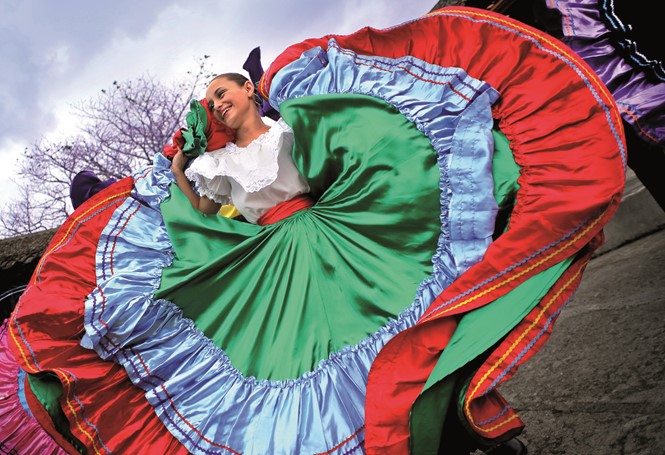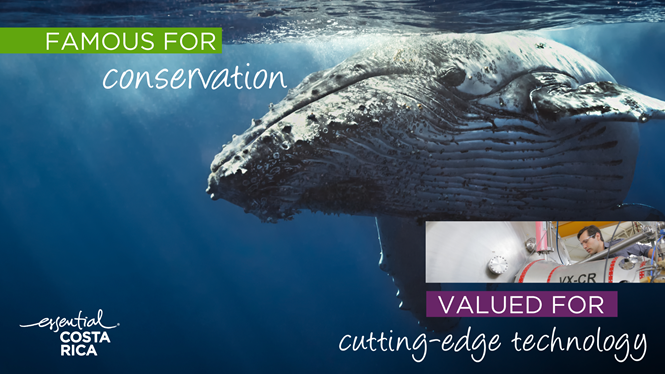Place branding: Costa Rica
A popular destination for tourism, Costa Rica transformed its economy through a comprehensive country brand strategy that set interrelated goals for foreign investment, sustainability and tourism. Amy Sandys reports
In December 1948, the president of Costa Rica disbanded the country’s army. Investing the money saved in education, security and culture, José Figueres Ferrer’s decision led to the development of a country whereby individuals were less divided along class lines. And, with this egalitarianism, so developed better living standards as well as a renewed enthusiasm for the country’s unique heritage and ‘pura vida,’ or ‘pure life,’ outlook.
This generational change, says Daniel Valverde Bagnarello, country brand director for Costa Rica’s current place brand initiative Essential Costa Rica, had a lasting impact on not only Costa Rican attitudes – but on the perspective of outsiders. Bagnarello says, “By the time we hit the 1990s, Costa Rica had a big workforce of highly educated professionals. They changed the model of our economy and that’s why Intel, in 1996, decided to open a facility – here in the country.” The opening of Costa Rica to external investment was, says Bagnarello, one of key driving forces behind the country’s current appeal as a destination for foreign direct investment (FDI) – as well as its success as an export market. Companies copied Intel’s outsourcing model, marking Costa Rica as a strategic overseas destination for multinational firms looking to establish a presence in the South American market.
With a more economically developed economy came a strategic change in how Costa Rica positions itself. “We were no longer just a tourist country with a tourism-based economy, or an agricultural-based economy,” says Bagnarello. “Different things were happening in the country with the kind of products we were supporting; we wanted a new brand to include everyone.”
A new country brand was therefore needed to replace Costa Rica’s ‘No artificial ingredients’ campaign which had run for over 25 years. While successful, ‘No artificial ingredients’ had become too tourism-focused, says Bagnarello. “The country’s economic model evolved and the need arose to create a country brand that completely projected everything that we have to offer,” he says. And so, by combining Costa Rica’s renewed vigour for entrepreneurship with its successful tourist-oriented place brand model, ‘Essential Costa Rica’ began rolling out to its internal and external audience.
Key to developing such a successful strategy, says Bagnarello, was encompassing all Costa Rica’s assets into one, easily transferable brand which could be communicated in a variety of ways, to a variety of places. Numerous governmental departments are behind the ‘Essential Costa Rica’ brand, each charged with delivering a successful brand strategy for either FDI, exports or tourism.
Waiting for visitors to discover the opportunities that await is not, however, the Costa Rican way. Through targeting and delivering its brand to key overseas locations, selected each year. Costa Rica’s branding transcends the confines of its national borders, identifying markets where the brand has potential for success.
Despite a renewed focus on investment, Costa Rica was also sure to consolidate its tourist industry. Wellness and adventure tourism continue to be major draws for those looking for a less conventional holiday experience; ensuring the sector remains top of the agenda, despite economic diversification, is essential for those for whom tourism provides an income. Indeed, says Bagnarello, the benefits of a strong tourism industry are multifaceted, “Tourism promotes sustainability, the rescue of culture and generates employment which positively impacts Costa Rica.”
And, in Costa Rica’s case, its country brand endorses protection of the country’s unique and beautiful natural environment through a country brand licensing model. Combining business, tourism, sustainability and culture into one coherent brand strategy is no mean feat. Yet ‘essential Costa Rica’ manages to portray the best of what the country offers to the most appreciative audiences – those who truly embody its ‘pura vida’ spirit.















